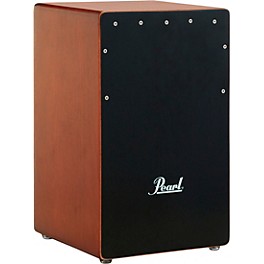Cajons
29 matches found
10% Back In Rewards** thru 12/4
10% Back In Rewards** thru 12/4
10% Back In Rewards** thru 12/4
10% Back In Rewards** thru 12/4
10% Back In Rewards** thru 12/4
10% Back In Rewards** thru 12/4
On Sale
10% Back In Rewards** thru 12/4
On Sale
10% Back In Rewards** thru 12/4
10% Back In Rewards** thru 12/4
10% Back In Rewards** thru 12/4
10% Back In Rewards** thru 12/4
On Sale
10% Back In Rewards** thru 12/4
On Sale
10% Back In Rewards** thru 12/4
On Sale
10% Back In Rewards** thru 12/4
On Sale
10% Back In Rewards** thru 12/4
On Sale
10% Back In Rewards** thru 12/4
10% Back In Rewards** thru 12/4
10% Back In Rewards** thru 12/4
10% Back In Rewards** thru 12/4
10% Back In Rewards** thru 12/4
10% Back In Rewards** thru 12/4
On Sale
10% Back In Rewards** thru 12/4
10% Back In Rewards** thru 12/4
10% Back In Rewards** thru 12/4
A box-shaped hand percussion instrument that has its origins in 18th century Peru, the cajón is played by making contact with the front plate. It’s unique in that it’s designed for the percussionist to be seated on top of the instrument. The cajón slowly gained popularity throughout South America, and reached a peak in notoriety by the mid-1800s. By the early 20th century, the cajon had undergone considerable technological advancement, and had reached the bass box drum form we see today, with a resonant front plate made from a select tone wood, and open sound board at the rear.
Now an integral part of Peruvian and Cuban music, the cajón takes three main forms: the bass box drum, the middle drum, and the solo drum. While the bass box drum, believed to have been developed from a shipping crate, is large enough for the percussionist to sit atop it, the middle drum is said to have come from a smaller box used to ship church candles, and is played with spoons instead of the palms and fingers. The solo drum is believed to have originated from a drawer.
The cajón made a considerable jump in the 1970s, when Peruvian composer and cajón master Caitro Soto gave Spanish guitarist Paco de Lucía a cajón during one of his visits to Peru. De Lucía is said to have liked the sounds of this instrument so much that he purchased a second cajón before leaving the country, and eventually introduced the cajón to flamenco music. Since that time, the cajón has been incorporated into nearly every style of music, including modern rock and hip-hop music. The invention of the remote kick pedal allows the drummer to sit on the cajon, play the drum kit and percussion with his hands, and sound the cajon by depressing a pedal that is often conveniently placed between the hi-hat pedal and double bass pedal.

